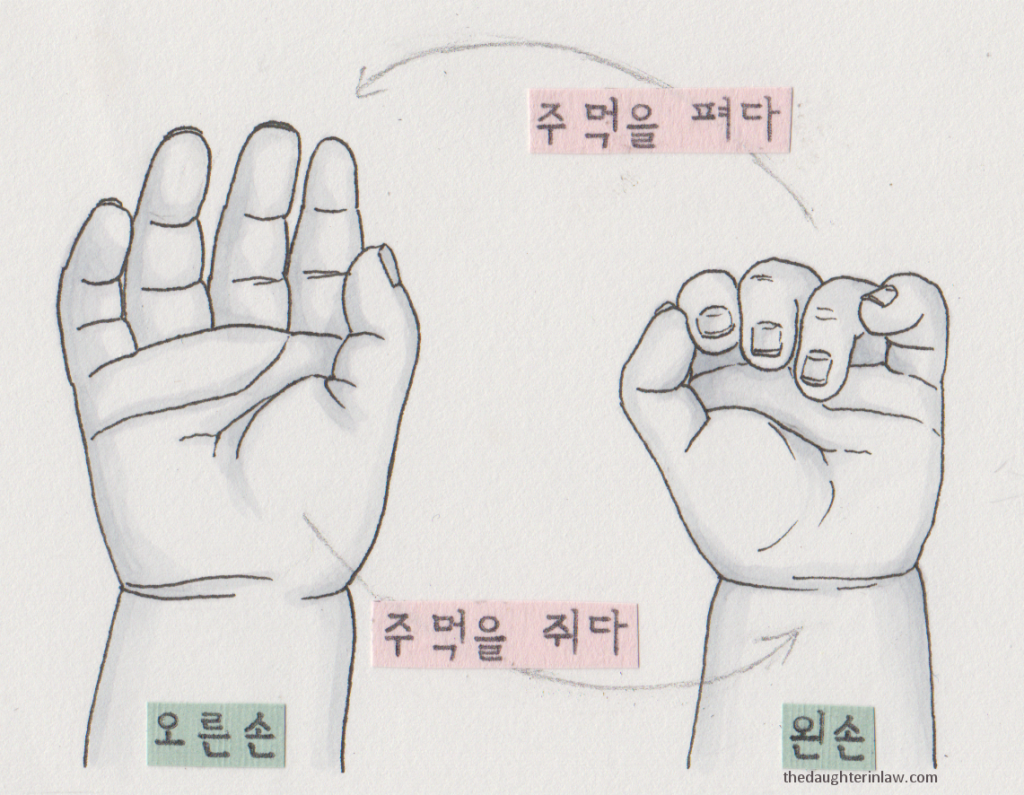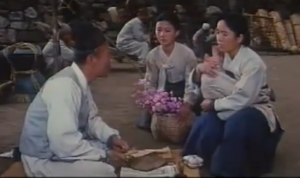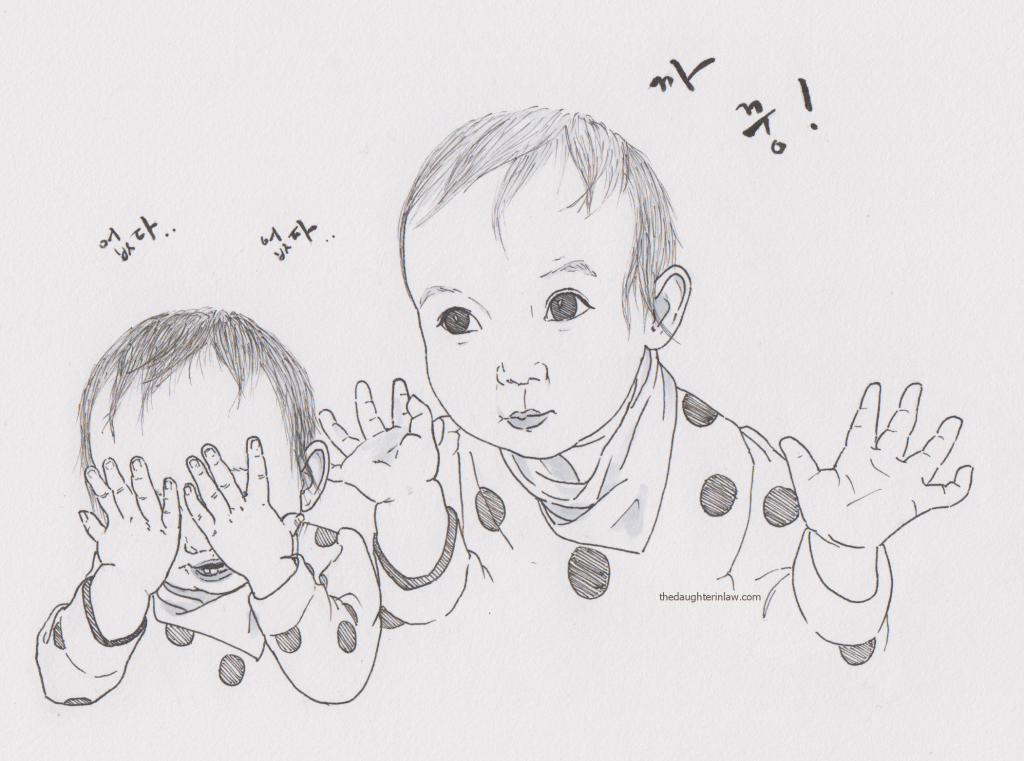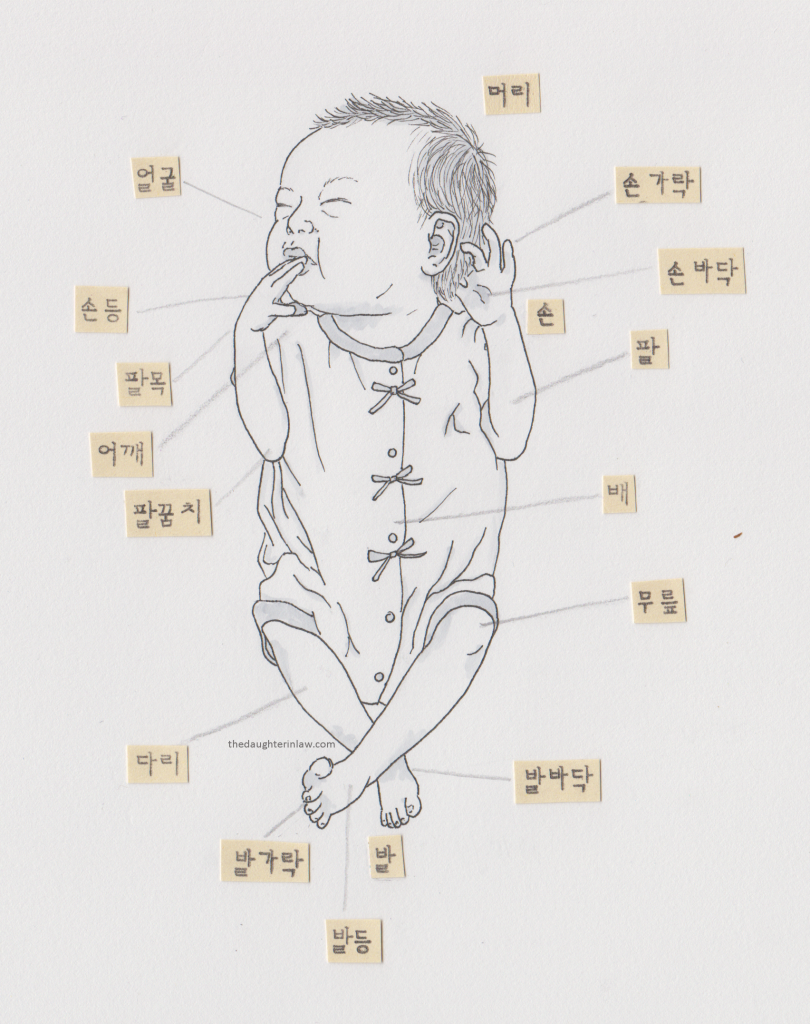 A young baby doesn’t do very much for herself, so maybe this post would be more accurately titled as ‘A New Mother’s Daily Routine’
A young baby doesn’t do very much for herself, so maybe this post would be more accurately titled as ‘A New Mother’s Daily Routine’
Here are two sets of vocabulary for the daily activities of a newborn. Above the pencil line on each caption is the causative version of the verb. You would use this form to describe what you are doing for the baby, or what someone else does for the baby (엄마가.. ) and you can also conjugate these using -아/어주다 (This has already been done in the case of “수건으로 몸을 닦아주다”) and add an ending such as -ㄹ래?, -ㄹ까?, -ㄹ게, to talk to your baby about what you are going to do for them or to offer to do something for them. For example “기저귀 갈아줄까?”
You can see the plain form of the verb (assuming the baby could do it for herself) below each pencil line. Parents often use the plain form of the verb with an ending such as -자 or -할래? or -할까? when speaking directly to the baby about what they are going to do, even if they are doing it for the baby, rather than the baby doing it independently or actively together with the parent. For Example “옷입자!” “목욕할래?”
Notes on some of the vocabulary:
At the top I’ve included “깨우다” (to wake <someone> up) I’m definitely not one to wake up Alice except on very urgent occasions, but 깨우다 can also be useful to warn other people when your baby is asleep, for example “애기를 깨우지 마세요”
“눈을 뜨다” is simply to open one’s eyes.
“낮잠” is a nap
“엎드려놓다” specifically refers to placing someone on their stomach. This selection of verbs is specifically for ‘tummy time’ which is a recommended activity for newborn and small babies to strengthen their neck and shoulder muscles before they start crawling and walking. To talk about this to baby, you might prefer something simple like “터미타임하자!” or “놀자!”
“입히다” is to dress someone, “갈아입히다” is to change someone’s clothes.
“갈다” is to change, “채우다” means to fasten or attach, and is the causative of “차다”
Alice is usually the model for my illustrations on this blog, but since she had already grown too much when I started working on this illustration, I have instead drawn another beautiful Korean-Australian baby, Ebony. I want to say a big thanks to Ebony and her mum, Jez, for their assistance with this post. If you would like to see more of Ebony and Jez’s story, you can follow them on Instagram
If you would like further clarification or example sentences to go with this post, please let me know, I am more than happy to revise and expand it.








 If you are going to use 포대기, apply the same care and commonsense as when using any other baby carrier or mobility device. I am not an expert on infant physiology and don’t want any harm to come to your child. I’ve also read a few people’s accounts of becoming bow legged from being carried excessively in a 포대기 as an infant. I don’t know whether studies have been done on this, but again, use it carefully and in moderation.
If you are going to use 포대기, apply the same care and commonsense as when using any other baby carrier or mobility device. I am not an expert on infant physiology and don’t want any harm to come to your child. I’ve also read a few people’s accounts of becoming bow legged from being carried excessively in a 포대기 as an infant. I don’t know whether studies have been done on this, but again, use it carefully and in moderation.


